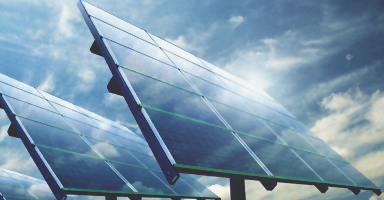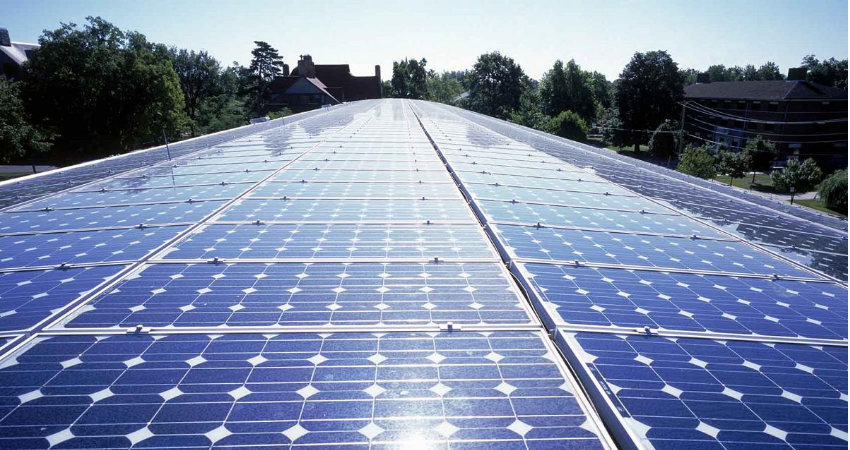

 PV
PV

 PV
PV home > Research > Research Area > PV
home > Research > Research Area > PV
-
연구주제 (Research Areas)
◆ Power Conversion Circuit Design and Control Algorithm for Electric Vehicles (EV) and Fuel Cell EV
◆ Power Conversion Applications : Electric Machine Drives (DC/BLDC/PMSM/IM) based on Microprocessors,
Design and Control of Power Converters (DC to DC, AC to DC, DC to AC, AC to AC)
◆ Power Electronics Circuits and Control, Interface for Distributed Generation Systems Using Renewable Energy Sources (Wind Turbines/Photovoltaic Arrays/Fuel Cells/Energy Storage Devices)
◆ Driving Circuits and Driving Methods of AC Plasma Display Panel (PDP) and Liquid Crystal Display (LCD)
태양광발전 (photovoltaic power generation, 太陽光發電)은 햇빛을 직류 전기로 바꾸어 전력을 생산하는 발전 방법이다. 태양광발전은 여러개의 태양 전지들이 붙어있는 태양광 패널을 이용한다. 재생가능 에너지에 대한 수요가 증가함에 따라, 태양 전지와 태양광 어레이의 생산도 크게 늘어나고 있는 추세이다.
태양광발전량은 2년마다 두 배씩 증가하였으며, 2002년 이래로 매년 평균 48%의 성장을 하였고, 에너지 기술 분야에서 가장 빠르게 성장하고 있는 분야이다. 잠정적인 자료에 의하면 2007년 말에, 전 세계의 누적 생산량은 12,400MW였다. 이 생산 능력의 약 90%는 계통연계형으로 이루어져 있다. 설치는 지상(또는 농장이나 초지) 또는 건물일체형 태양광 발전(Building Integrated Photovoltaic 또는 BIPV)으로 알려진 건물의 지붕이나 벽면이다.
태양광 전기에 대한 특혜적인 기준가격 의무구매제와 요금상계제 같은 재정적인 장려책은 호주, 독일, 이스라엘, 일본 그리고 미국을 포함한 많은 나라에서 태양광 발전 설비의 설치를 확대하도록 했다.
< 출처 : http://ko.wikipedia.org/wiki/%ED%83%9C%EC%96%91%EA%B4%91_%EB%B0%9C%EC%A0%84>

< 출처 : http://www.westpower.com>
Photovoltaics (PV) is the conversion of light into electricity using semiconducting materials that exhibit the photovoltaic effect, a phenomenon studied in physics, photochemistry, and electrochemistry. A typical photovoltaic system employs solar panels, each comprising a number of solar cells, which generate electrical power. PV installations may be ground-mounted, rooftop mounted or wall mounted. The mount may be fixed, or use a solar tracker to follow the sun across the sky.
Solar PV has specific advantages as an energy source: once installed, its operation generates no pollution and no greenhouse gas emissions, it shows simple scalability in respect of power needs and silicon has large availability in the Earth’s crust.
PV systems have the major disadvantage that the power output works best with direct sunlight, so about 10-25% is lost if a tracking system is not used. Dust, clouds, and other obstructions in the atmosphere also diminish the power output. Another important issue is the concentration of the production in the hours corresponding to main insolation, which do not usually match the peaks in demand in human activity cycles. Unless current societal patterns of consumption and electrical networks adjust to this scenario, electricity still needs to be stored for later use or made up by other power sources, usually hydrocarbons.
Photovoltaic systems have long been used in specialized applications, and standalone and grid-connected PV systems have been in use since the 1990s. They were first mass-produced in 2000, when German environmentalists and the Eurosolar organization got government funding for a ten thousand roof program. Advances in technology and increased manufacturing scale have in any case reduced the cost, increased the reliability, and increased the efficiency of photovoltaic installations. Net metering and financial incentives, such as preferential feed-in tariffs for solar-generated electricity, have supported solar PV installations in many countries. More than 100 countries now use solar PV.
After hydro and wind powers, PV is the third renewable energy source in terms of global capacity. At the end of 2016, worldwide installed PV capacity increased to more than 300 gigawatts (GW), covering approximately two percent of global electricity demand. China, followed by Japan and the United States, is the fastest growing market, while Germany remains the world's largest producer, with solar PV providing seven percent of annual domestic electricity consumption. With current technology (as of 2013), photovoltaics recoups the energy needed to manufacture them in 1.5 years in Southern Europe and 2.5 years in Northern Europe.
< Source : https://en.wikipedia.org/wiki/Photovoltaics >

< Source : https://www.nrel.gov>


